分布式授权解决方案:
其中授权服务一般放在网关服务上,资源服务指的是,挂在网关下得各个微服务
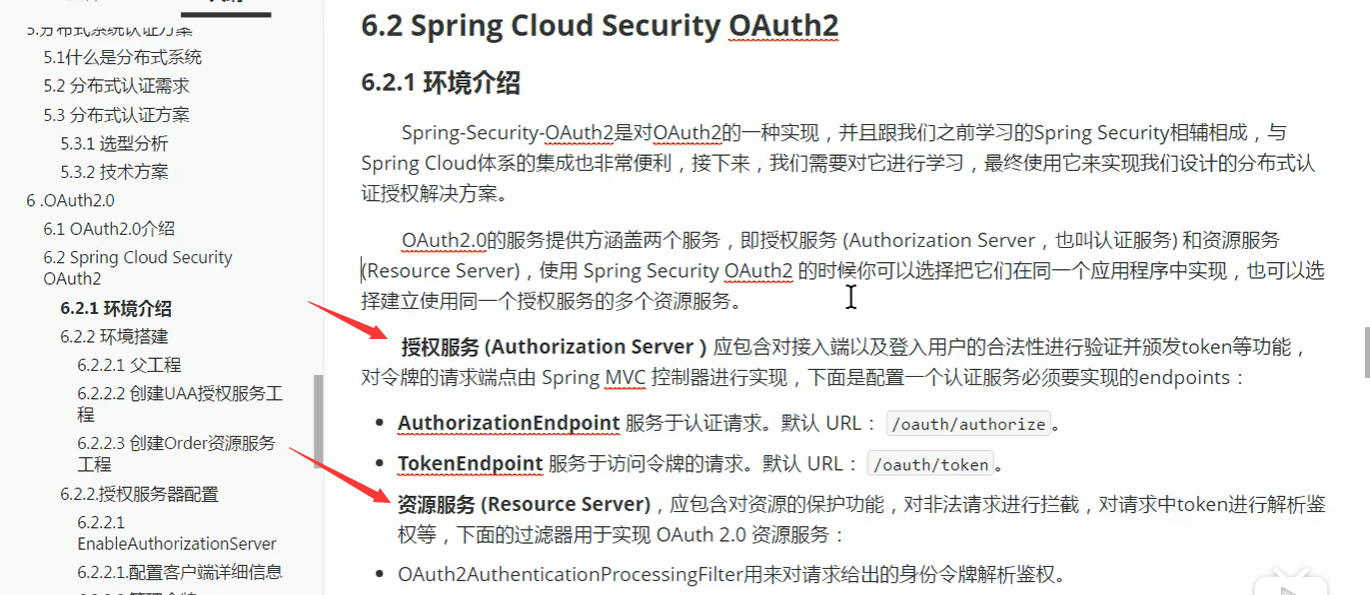
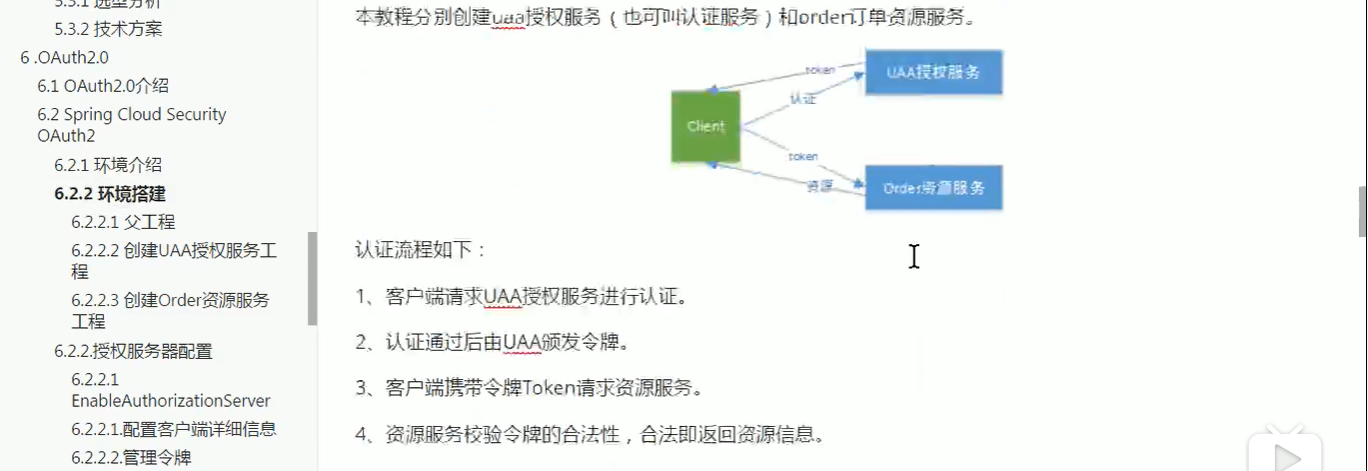
授权服务配置:
/** * 授权服务配置 */ @Configuration //开启oauth2,auth server模式 @EnableAuthorizationServer public class AuthorizationServerConfig extends AuthorizationServerConfigurerAdapter {


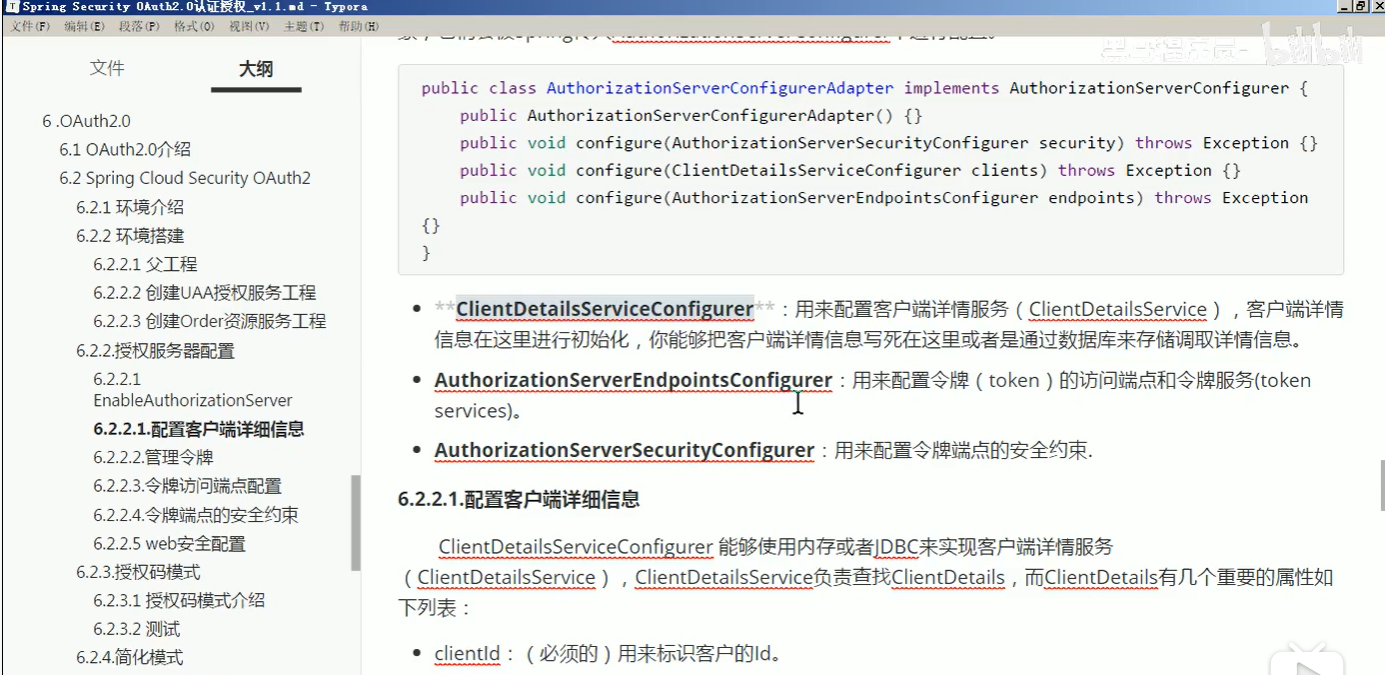

客户端详情服务类似于userdetailservice;一个针对客户,一个针对客户端
这3步的配置代码:
package lee.config; import org.springframework.beans.factory.annotation.Autowired; import org.springframework.context.annotation.Bean; import org.springframework.context.annotation.Configuration; import org.springframework.http.HttpMethod; import org.springframework.security.authentication.AuthenticationManager; import org.springframework.security.crypto.password.PasswordEncoder; import org.springframework.security.oauth2.config.annotation.configurers.ClientDetailsServiceConfigurer; import org.springframework.security.oauth2.config.annotation.web.configuration.AuthorizationServerConfigurerAdapter; import org.springframework.security.oauth2.config.annotation.web.configuration.EnableAuthorizationServer; import org.springframework.security.oauth2.config.annotation.web.configurers.AuthorizationServerEndpointsConfigurer; import org.springframework.security.oauth2.config.annotation.web.configurers.AuthorizationServerSecurityConfigurer; import org.springframework.security.oauth2.provider.ClientDetailsService; import org.springframework.security.oauth2.provider.code.InMemoryAuthorizationCodeServices; import org.springframework.security.oauth2.provider.token.AuthorizationServerTokenServices; import org.springframework.security.oauth2.provider.token.DefaultTokenServices; import org.springframework.security.oauth2.provider.token.TokenStore; @Configuration //开启oauth2,auth server模式 @EnableAuthorizationServer public class AuthorizationServerConfig extends AuthorizationServerConfigurerAdapter { @Autowired private PasswordEncoder passwordEncoder; //配置客户端 /**1.配置客户端,允许哪些客户端来调用服务 * 类似于userdetailservice 用来查询客户端详情信息的 * @param clients * @throws Exception */ @Override public void configure(ClientDetailsServiceConfigurer clients) throws Exception { clients.inMemory() //client的id和密码 .withClient("client1") .secret(passwordEncoder.encode("123123")) //给client一个id,这个在client的配置里要用的 .resourceIds("resource1") //允许的申请token的方式,测试用例在test项目里都有. //authorization_code授权码模式,这个是标准模式 //implicit简单模式,这个主要是给无后台的纯前端项目用的 //password密码模式,直接拿用户的账号密码授权,不安全 //client_credentials客户端模式,用clientid和密码授权,和用户无关的授权方式 //refresh_token使用有效的refresh_token去重新生成一个token,之前的会失效 .authorizedGrantTypes("authorization_code", "password", "client_credentials", "implicit", "refresh_token") //授权的范围,每个resource会设置自己的范围. .scopes("scope1", "scope2") //这个是设置要不要弹出确认授权页面的. .autoApprove(false) //这个相当于是client的域名,重定向给code的时候会跳转这个域名 .redirectUris("http://www.baidu.com"); /*.and() .withClient("client2") .secret(passwordEncoder.encode("123123")) .resourceIds("resource1") .authorizedGrantTypes("authorization_code", "password", "client_credentials", "implicit", "refresh_token") .scopes("all") .autoApprove(false) .redirectUris("http://www.qq.com");*/ } @Autowired private ClientDetailsService clientDetailsService; @Autowired private TokenStore tokenStore; //配置token管理服务 @Bean public AuthorizationServerTokenServices tokenServices() { DefaultTokenServices defaultTokenServices = new DefaultTokenServices(); defaultTokenServices.setClientDetailsService(clientDetailsService); defaultTokenServices.setSupportRefreshToken(true); //配置token的存储方法 defaultTokenServices.setTokenStore(tokenStore); defaultTokenServices.setAccessTokenValiditySeconds(300); defaultTokenServices.setRefreshTokenValiditySeconds(1500); return defaultTokenServices; } //密码模式才需要配置,认证管理器 @Autowired private AuthenticationManager authenticationManager; //把上面的各个组件组合在一起 /**2.配置令牌怎么生成令牌怎么存储令牌等 * 配置令牌访问端点和令牌服务。其实就是配置令牌访问的url * @param endpoints * @throws Exception */ @Override public void configure(AuthorizationServerEndpointsConfigurer endpoints) throws Exception { endpoints.authenticationManager(authenticationManager)//认证管理器 .authorizationCodeServices(new InMemoryAuthorizationCodeServices())//授权码管理 .tokenServices(tokenServices())//token管理 .allowedTokenEndpointRequestMethods(HttpMethod.POST); } //配置哪些接口可以被访问 /**3.配置令牌端点安全约束,不是任何人都能来申请令牌的(例子里我们放开了限制) * 类似于 * .antMatchers("/manager/index").hasAnyAuthority("Role_List") * @param security * @throws Exception */ @Override public void configure(AuthorizationServerSecurityConfigurer security) throws Exception { security.tokenKeyAccess("permitAll()")///oauth/token_key公开 .checkTokenAccess("permitAll()")///oauth/check_token公开 .allowFormAuthenticationForClients();//允许表单认证 } }
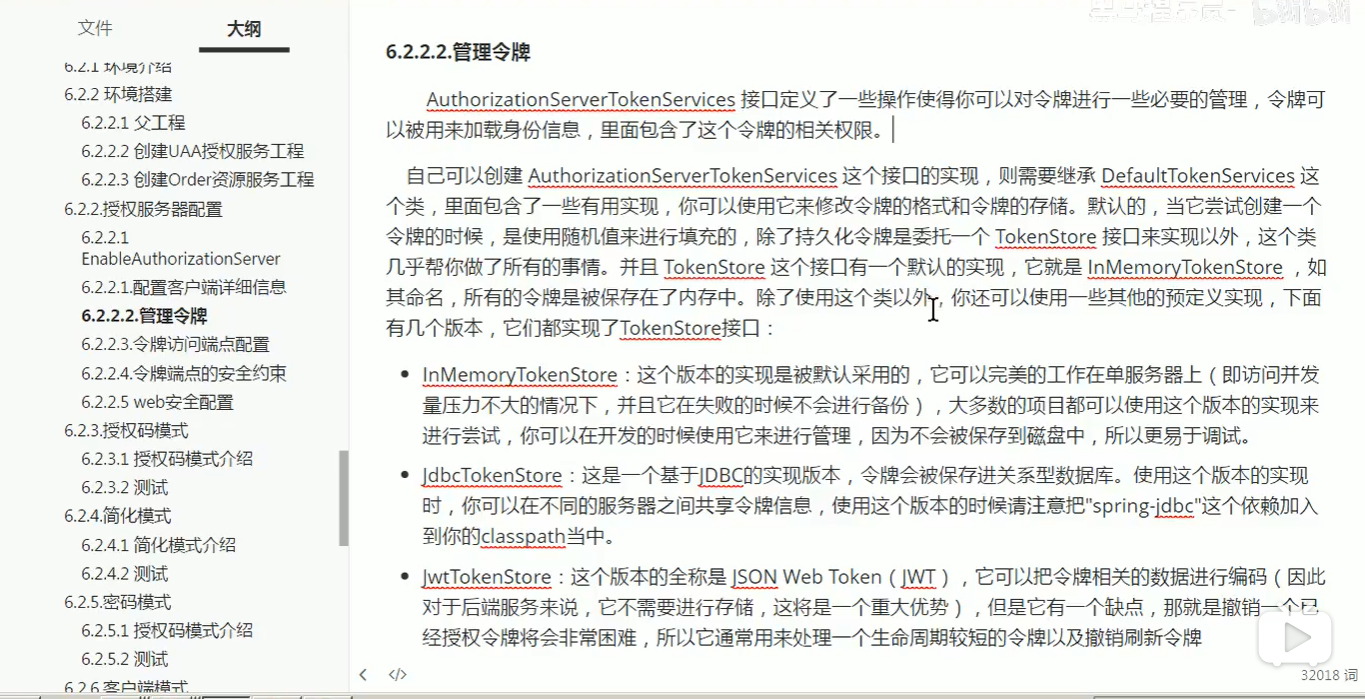


@Configuration public class TokenConfig { //配置token的存储方法 @Bean public TokenStore tokenStore() { //配置token存储在内存中,这种是普通token,每次都需要远程校验,性能较差 return new InMemoryTokenStore(); } }

@Autowired private TokenStore tokenStore; //配置token管理服务 @Bean public AuthorizationServerTokenServices tokenServices() { DefaultTokenServices defaultTokenServices = new DefaultTokenServices(); defaultTokenServices.setClientDetailsService(clientDetailsService); defaultTokenServices.setSupportRefreshToken(true);//支持刷新令牌 defaultTokenServices.setTokenStore(tokenStore); //配置token的存储方法-例子采用内存存储 defaultTokenServices.setAccessTokenValiditySeconds(300); //令牌有效期 defaultTokenServices.setRefreshTokenValiditySeconds(1500); //刷新令牌有效期 默认3天 return defaultTokenServices; }
此服务配置注入在授权服务AuthorizationServerConfig里
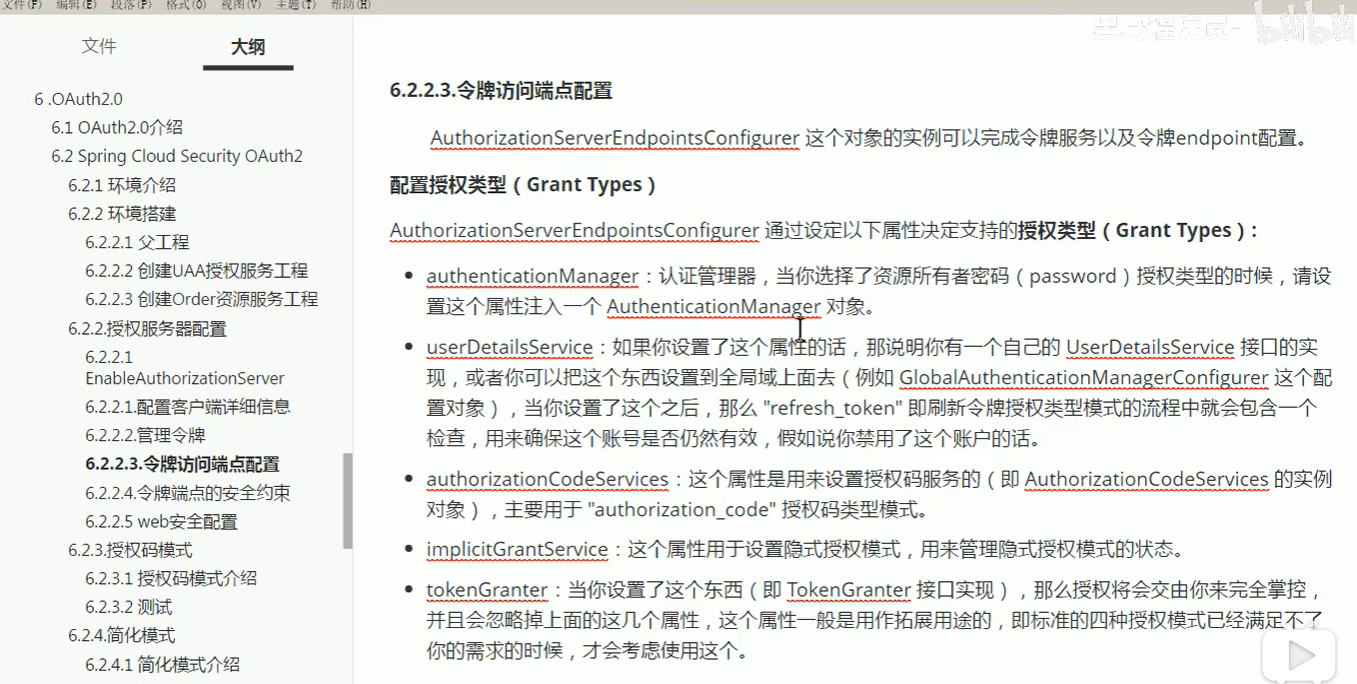
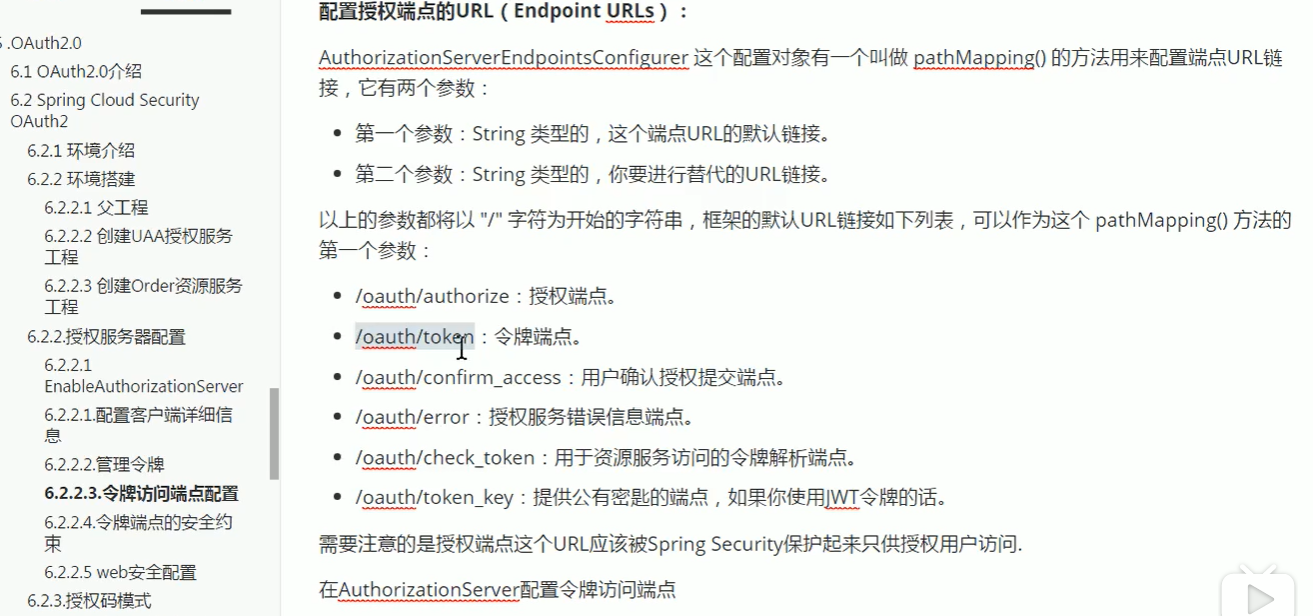
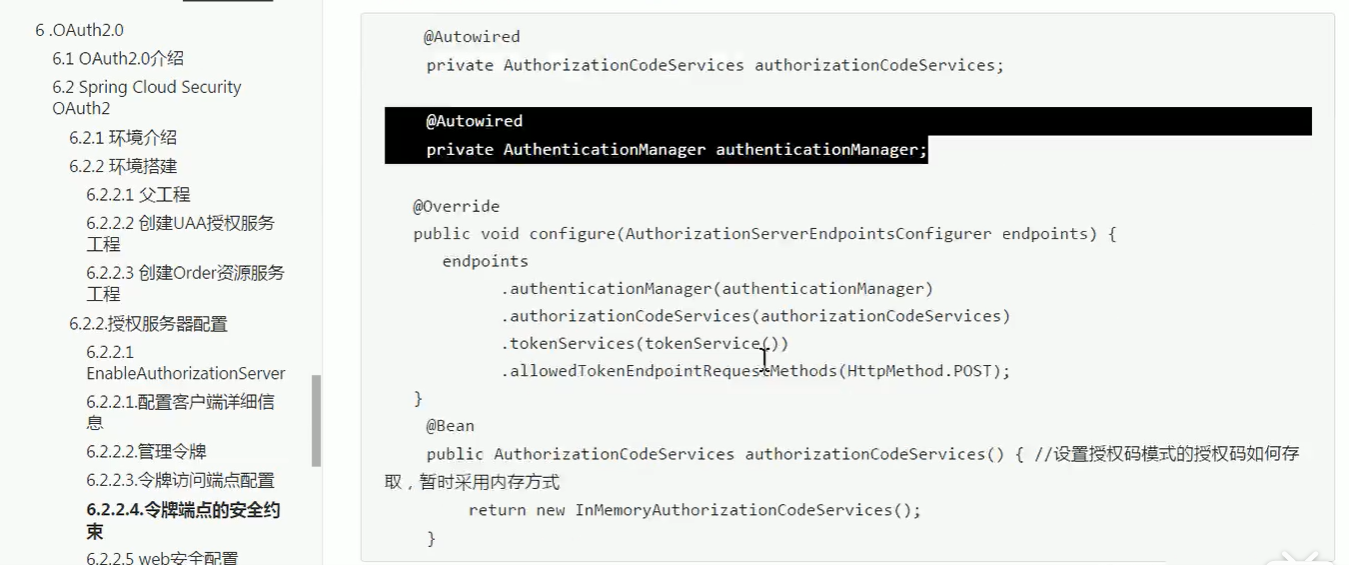
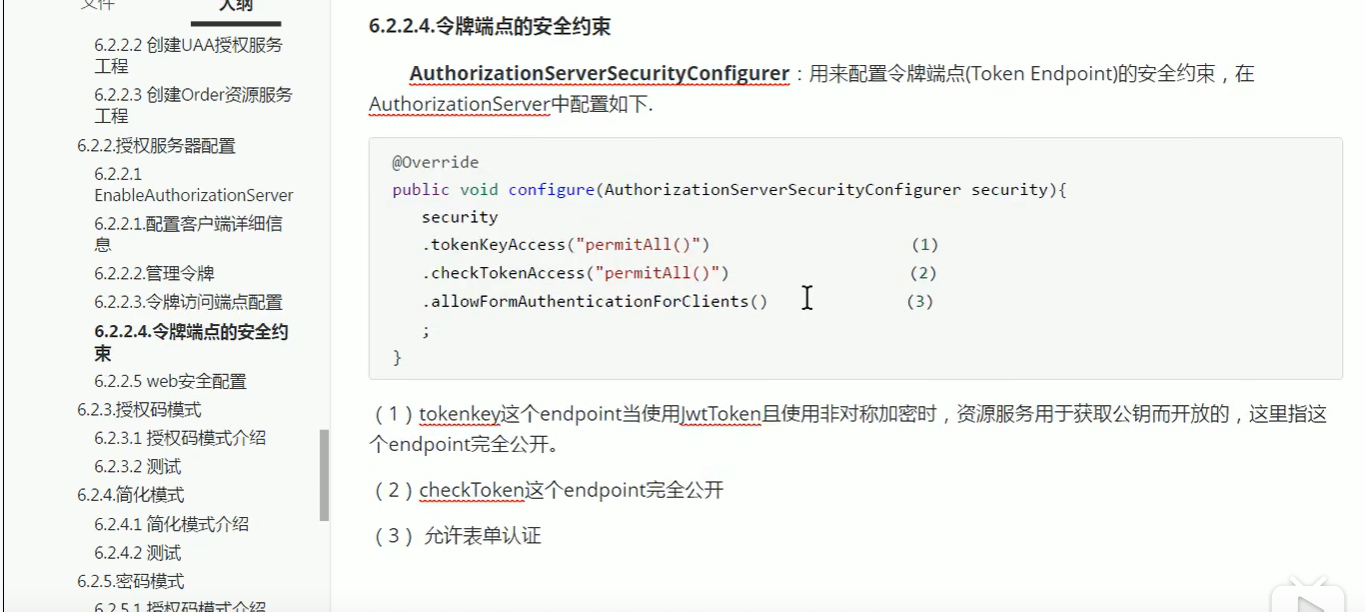

代码如下:
package lee.config; import lee.model.MyUserDetails; import org.springframework.context.annotation.Bean; import org.springframework.context.annotation.Configuration; import org.springframework.security.authentication.AuthenticationManager; import org.springframework.security.config.annotation.method.configuration.EnableGlobalMethodSecurity; import org.springframework.security.config.annotation.web.builders.HttpSecurity; import org.springframework.security.config.annotation.web.configuration.WebSecurityConfigurerAdapter; import org.springframework.security.core.userdetails.User; import org.springframework.security.core.userdetails.UserDetailsService; import org.springframework.security.crypto.bcrypt.BCryptPasswordEncoder; import org.springframework.security.crypto.password.PasswordEncoder; import org.springframework.security.provisioning.InMemoryUserDetailsManager; @Configuration @EnableGlobalMethodSecurity(securedEnabled = true, prePostEnabled = true) public class WebSecurityConfig extends WebSecurityConfigurerAdapter { @Bean public PasswordEncoder passwordEncoder() { return new BCryptPasswordEncoder(); } //密码模式才需要配置,认证管理器 @Bean @Override protected AuthenticationManager authenticationManager() throws Exception { return super.authenticationManager(); } @Override protected void configure(HttpSecurity http) throws Exception { http.csrf().disable() .authorizeRequests() .anyRequest().permitAll() .and() .formLogin() .and() .logout(); } @Override @Bean public UserDetailsService userDetailsService() { /** * 基于内存创建用户 */ InMemoryUserDetailsManager manager=new InMemoryUserDetailsManager(); manager.createUser(User.withUsername("zhangsan").password(passwordEncoder().encode("123")).authorities("admin").build()); manager.createUser(User.withUsername("lisi").password(passwordEncoder().encode("123")).authorities("user").build()); return manager; /* return s -> { if ("admin".equals(s) || "user".equals(s)) { return new MyUserDetails(s, passwordEncoder().encode(s), s); } return null; };*/ } }
至此授权服务就已经搭建好了;下面我们进行测试一下:
一、授权服务
1.授权码模式
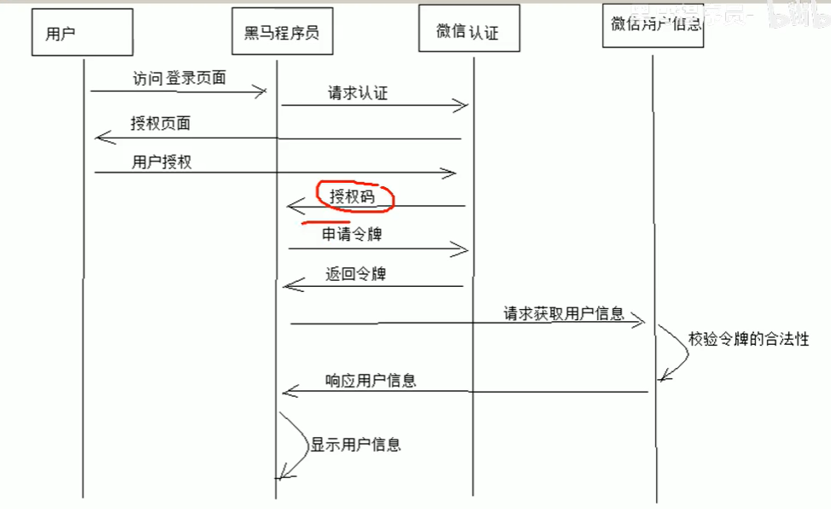
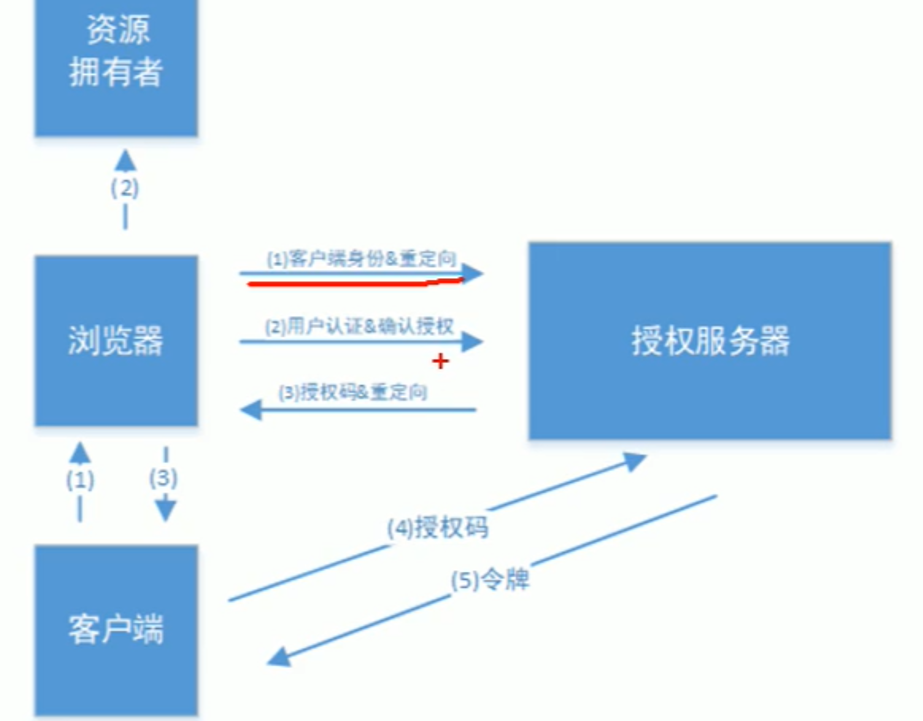
1.1浏览器访问
这代表我的页面(假如我的页面是百度)需要用9001的服务器进行登录(就像很多页面可以用QQ登陆一样)
这时候会跳转到9001的登录页面:
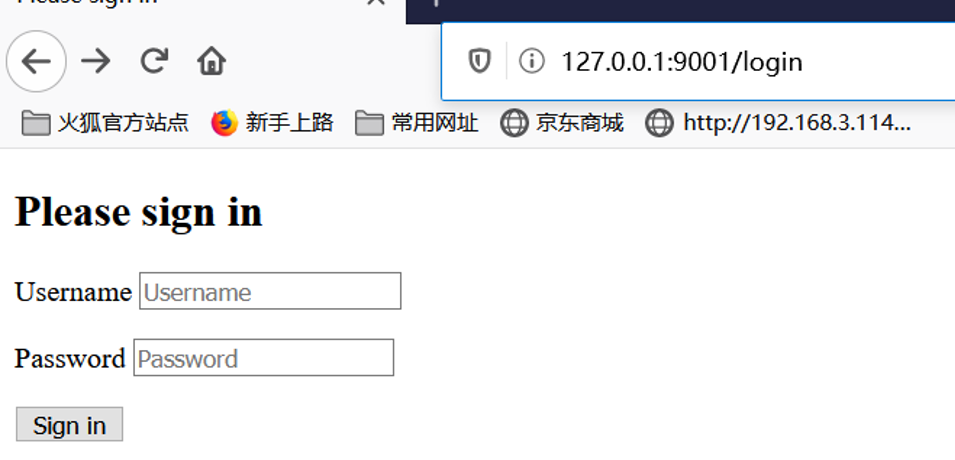
登录后,会跳转授权页面给该app授权,授权后会在重定向的页面带上授权码:
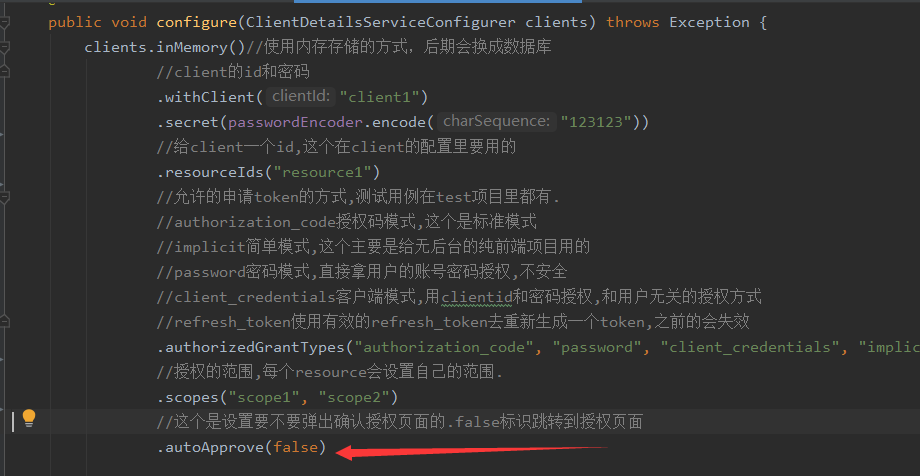

1.2拿到授权码后可以用授权码、之前在9001申请的appId和secret去获取令牌

刷新令牌:当访问令牌无效的时候可以用刷新令牌重新去申请访问令牌;
2.简化模式
浏览器访问
返回如下:

重定向连接会直接带上token信息:
简化模式用于没有服务器端的第三方单页面应用,因为没有服务器就无法接受授权码。
3.密码模式
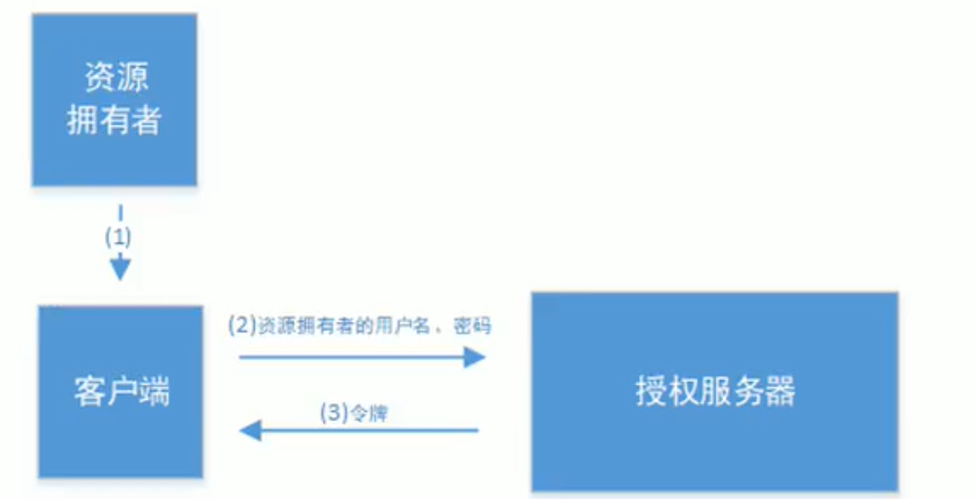
该模式会将密码泄露给客户端,所以这种模式只能用于client是我们自己开发的情况下,因此密码模式一般用于我们自己开发的第一方原生app。
直接申请返回令牌:
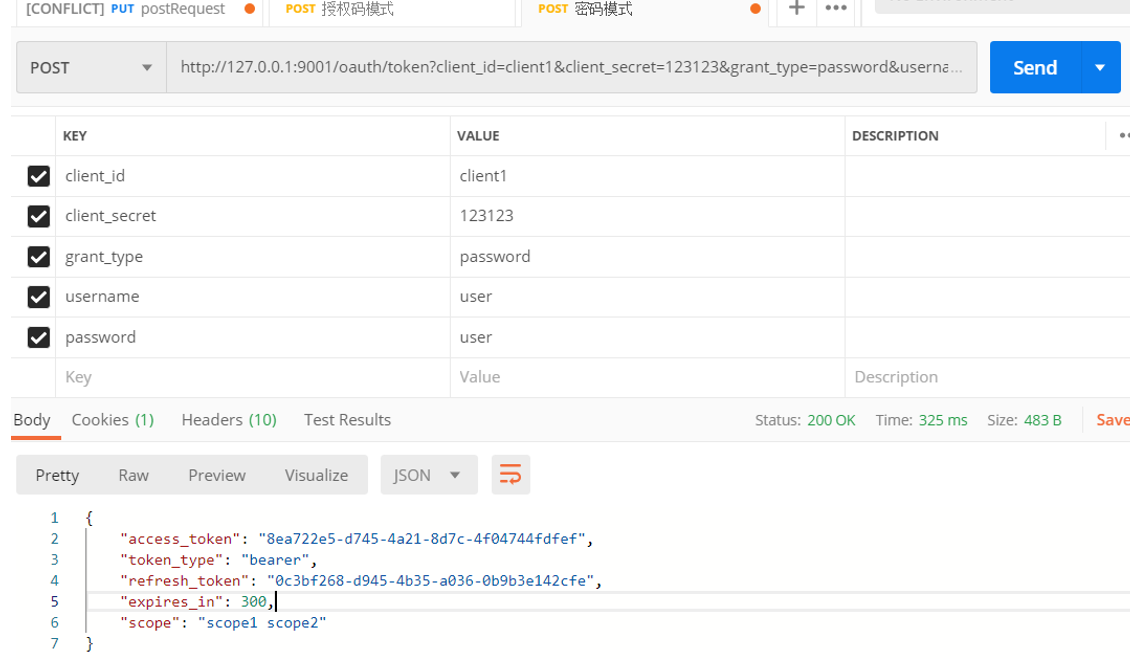
4.客户端模式

只需要client_id、client_secret 和grant_type授权类型即可申请令牌
Postman调用如下:
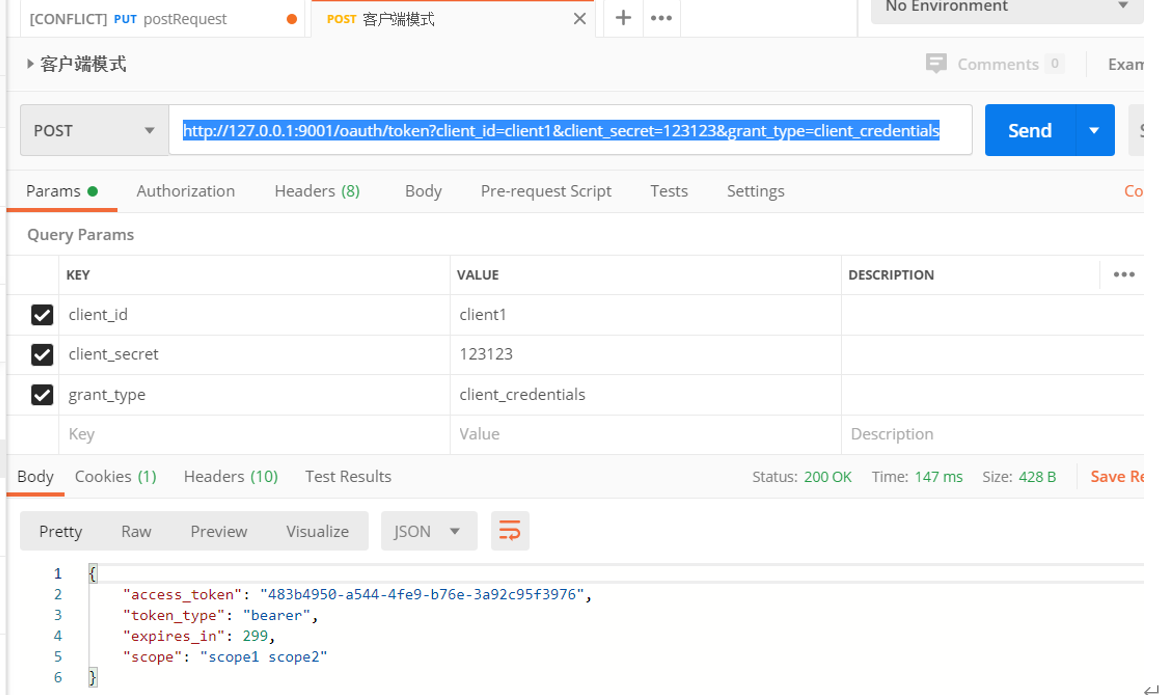
该模式用于在我们完全信任客户端的情况下,而client也是安全的;比如合作方对接,拉取一组用户信息。或者系统内部调用。
二、资源服务配置
/** * 资源服务配置 */ @Configuration //开启oauth2,reousrce server模式 @EnableResourceServer public class ResourceServerConfig extends ResourceServerConfigurerAdapter {
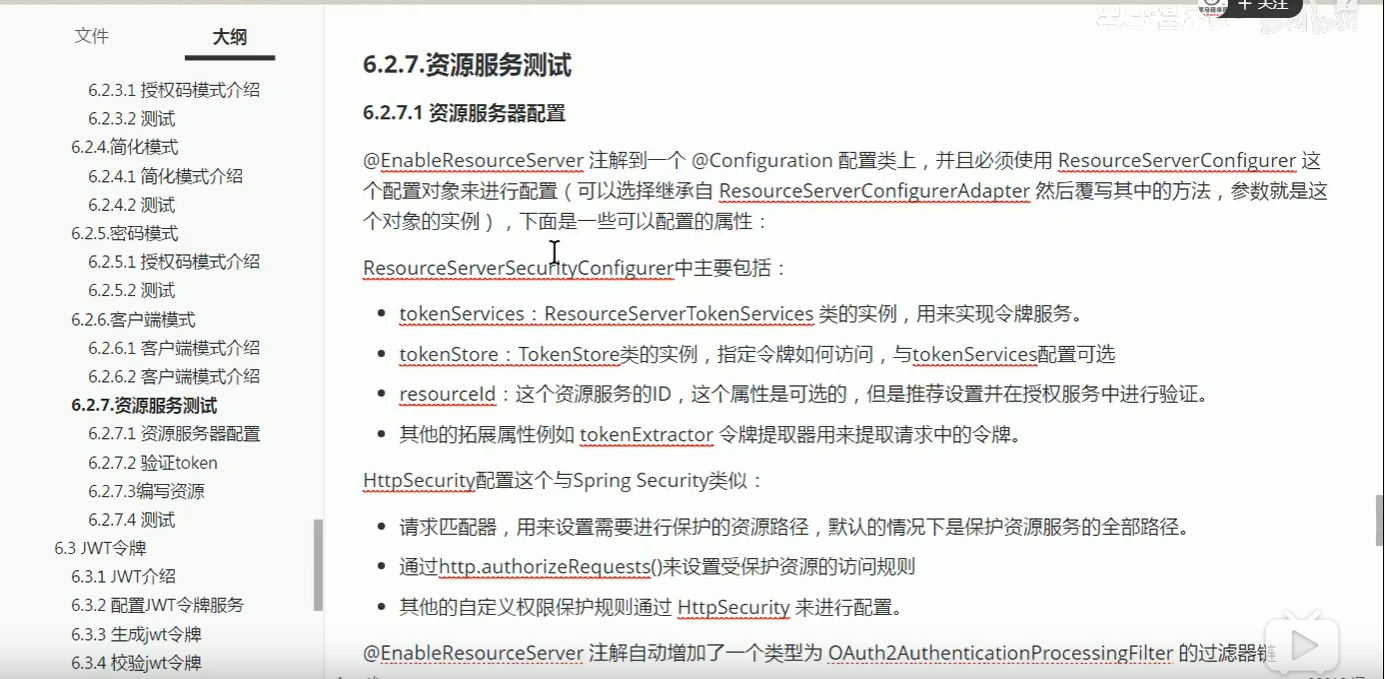
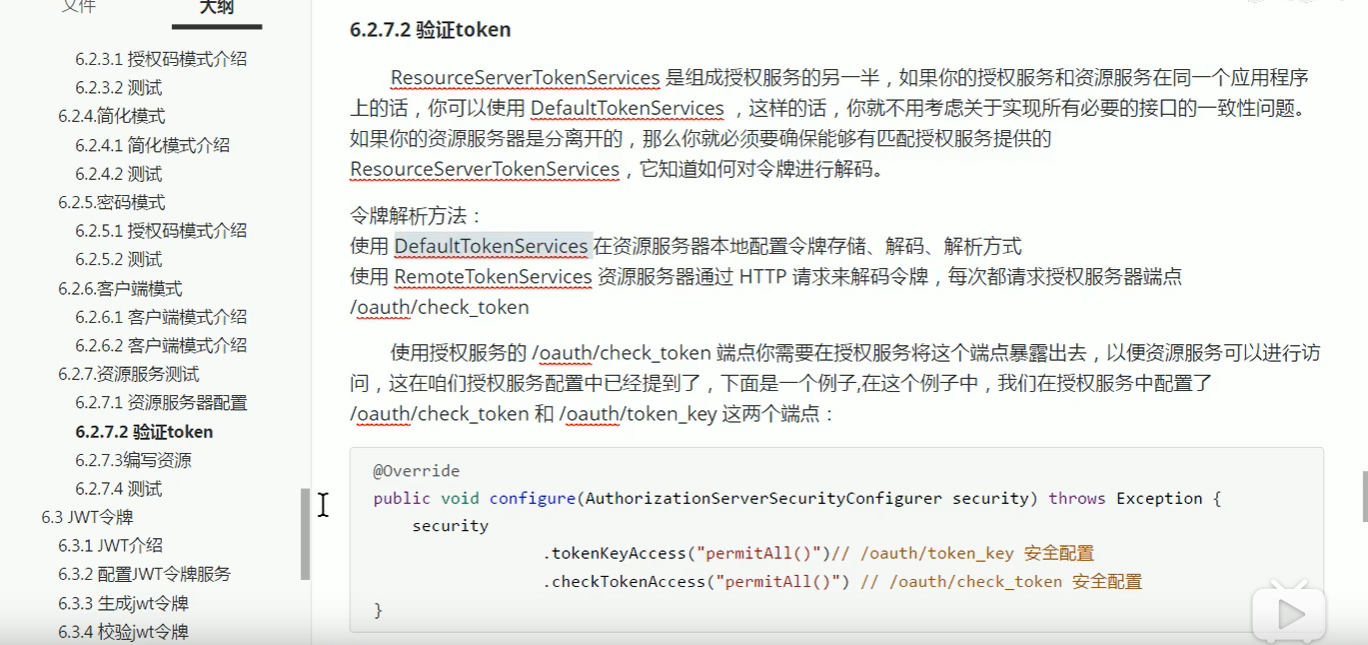
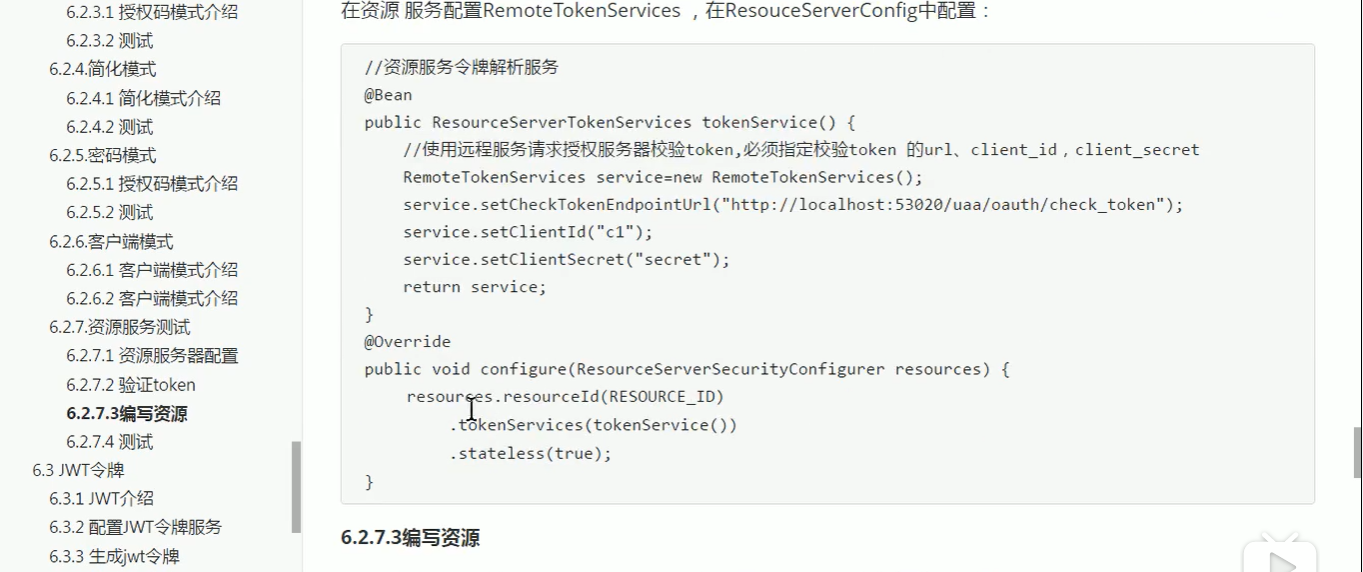
以上配置得代码:
/** * 资源服务配置 */ @Configuration //开启oauth2,reousrce server模式 @EnableResourceServer public class ResourceServerConfig extends ResourceServerConfigurerAdapter { public static final String RESOURCE_ID="resource1";//资源id @Override public void configure(ResourceServerSecurityConfigurer resources) throws Exception { resources //设置我这个resource的id, 这个在auth中配置, 这里必须照抄 .resourceId(RESOURCE_ID)//该资源id .tokenServices(tokenServices()) //这个貌似是配置要不要把token信息记录在session中 .stateless(true); } /** * 配置资源访问规则 * @param http * @throws Exception */ @Override public void configure(HttpSecurity http) throws Exception { http.csrf().disable() .authorizeRequests() //本项目所需要的授权范围,这个scope是写在auth服务的配置里的 .antMatchers("/**").access("#oauth2.hasScope('scope1')") .and() //配置要不要把token信息记录在session中 .sessionManagement().sessionCreationPolicy(SessionCreationPolicy.STATELESS); } /** * 令牌验证服务 * @return */ @Bean public RemoteTokenServices tokenServices(){ //远程token验证, 普通token必须远程校验 RemoteTokenServices services = new RemoteTokenServices(); //配置去哪里验证token services.setCheckTokenEndpointUrl("http://127.0.0.1:9001/oauth/check_token"); //配置组件的clientid和密码,这个也是在auth中配置好的 services.setClientId("client1"); services.setClientSecret("123123"); return services; } }
配置资源
@RestController public class IndexController { @RequestMapping("user") @PreAuthorize("hasAnyAuthority('user')") public String user() { return "user"; } //测试接口 @RequestMapping("admin") @PreAuthorize("hasAnyAuthority('admin')") public String admin() { return "admin"; } @RequestMapping("me") public Principal me(Principal principal) { return principal; } }
另外还要配置安全访问控制WebSecurityConfig 才能使权限生效:
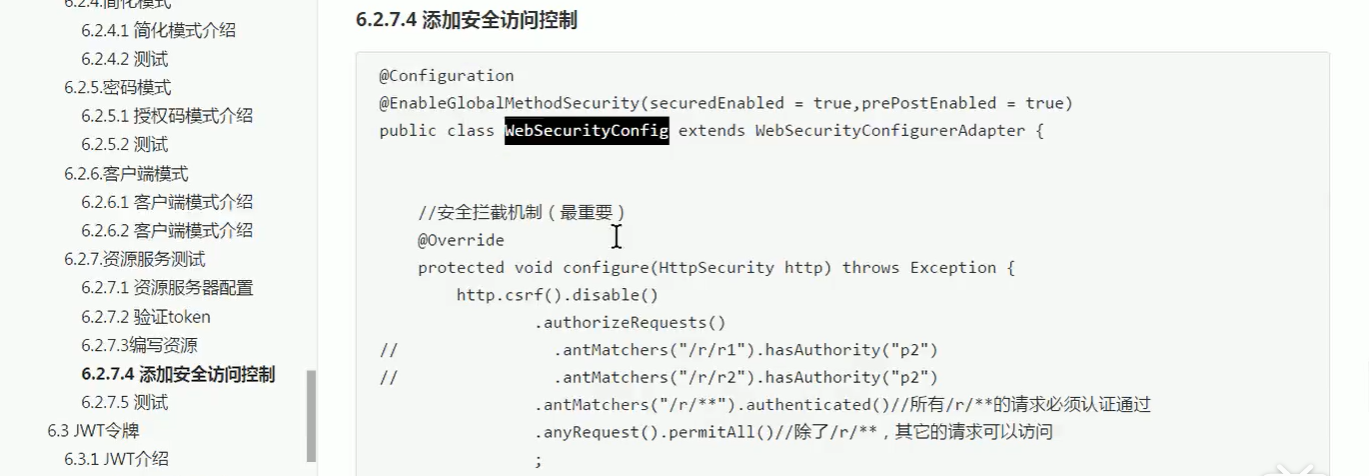
由于资源是基于方法得授权,基于web得授权就可以屏蔽掉了
@Configuration @EnableGlobalMethodSecurity(securedEnabled = true, prePostEnabled = true) public class WebSecurityConfig extends WebSecurityConfigurerAdapter { //安全拦截机制 @Override protected void configure(HttpSecurity http) throws Exception { http.csrf().disable() //由于拦截的是接口方法无需配置拦截url 只需要在controller配置即可 .authorizeRequests() .anyRequest().permitAll(); } }
校验令牌:http://127.0.0.1:9001/oauth/check_token
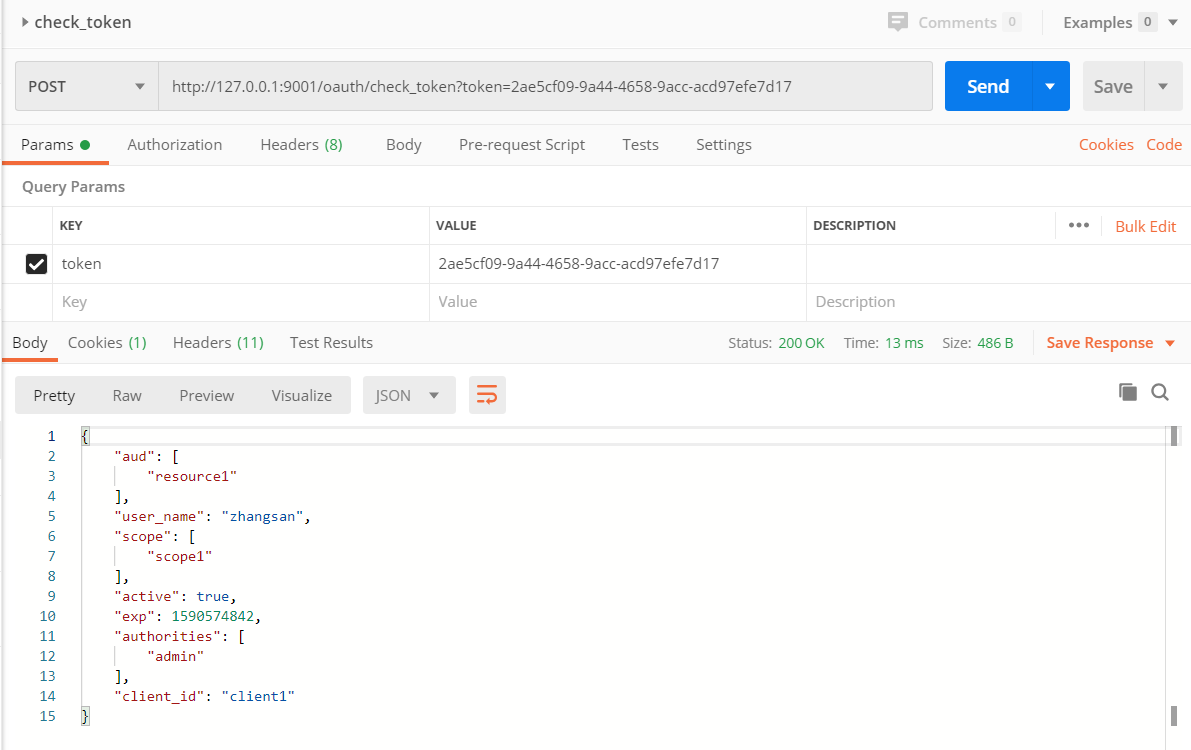
校验令牌会带回所有有用户所有权限信息,资源服务拿到这些权限信息后可以去申请相应得资源
带令牌访问资源:
需要在header里面带入令牌:Key:” Authorization” value:” Bearer+空格+token”

实际工作应用:若要用授权码模式 需要事先给定客户端一个 权限编码 并且在调用方法得时候 验证这个权限编码是否有权限调用接口
如果用账号密码模式 道理也一样
JWT令牌见下一章:
